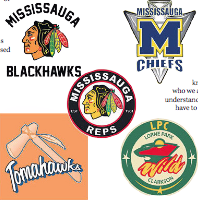Isaac Newton said “If I have seen further, it is by standing on the shoulders of giants”,
If you are against cultural appropriation, is it possible you are a racist?
First let’s define cultural appropriation.
“The act of taking or using things from a culture that is not your own, especially without showing that you understand or respect this culture.”
Fordham University law professor Susan Scafidi has defined cultural appropriation as encompassing the “unauthorized use of another culture’s dance, dress, music, language, folklore, cuisine, traditional medicine, religious symbols” and more.”
We are living through the horror of appropriating a food group from one “race” to another. The horror of then mixing it with another recipe from another ethnicity. And never take the literature of one tribe and share it with another. We certainly don’t want to share stories and learn about the other. What could be worse than discovering that an author in Rwanda found meaning from an author in Lithuania? Well, I guess these people are against intertextuality, which refers to those interrelationships among texts that shape a text’s meaning. The recognizable echoes of other texts in a text intensify the experience of the text by adding layers of meaning. New layers of meaning; a gift from others.
And clothing! The audacity to like “the look” from another culture/ethnicity and wear it. How demeaning is that? And hair????? Well, you certainly do not want to be seen wearing a hairstyle you saw on a woman from Africa or Japan, as if hairstyles were indigenous to a people, a race, an ethnicity, and more importantly, defines them.
What would have happened if these anti-cultural appropriationists had lived, for example, in Roman times? The Roman Empire conquered the Greek. But the Greek culture lived on because the Romans appropriated much of their culture as well as the Etruscan culture. The Romans borrowed many ideas and skills from these two groups, beginning with the Etruscans; from engineering to sports; architecture to art. We can look at buildings and art, today, and see the reflection of our collective past. Over the millennia, one culture after another appropriated. If not for appropriation, all would be lost.
I suggest that those who are against cultural appropriation, as defined here, are the true racists of our time. They each want us to go back to our caves, our clans, our tribes. Not celebrate diversity. Not mix. Heaven forbid. Not take from one culture/ethnicity to improve on another. They are against adding more “genes” to our collective cultural DNA. We see further by standing on the shoulders of giants who came before us; no matter the culture or ethnicity. Greatness knows no race, colour, creed or sexual orientation. Greatness comes from learning from other cultures.
I am going to share an incident that epitomizes the lengths people will go to prevent cultural appropriation; to keep us in our little boxes; separate and distinct.
 Brad Gallant, a man who identifies as Mi’kmaq, has won his human rights case against Mississauga (an indigenous name), the sixth largest city in Canada, just outside Toronto. Mississauga will take down all “Indigenous-themed” mascots imagery, symbols and names from city-owned sports facilities as part of a settlement worked out before the Human Rights Tribunal of Ontario in order protect the dignity and well-being of First Nations. Brad Gallant stated that the mascots, symbols, etc are “harmful to the wellbeing of Indigenous people.”
Brad Gallant, a man who identifies as Mi’kmaq, has won his human rights case against Mississauga (an indigenous name), the sixth largest city in Canada, just outside Toronto. Mississauga will take down all “Indigenous-themed” mascots imagery, symbols and names from city-owned sports facilities as part of a settlement worked out before the Human Rights Tribunal of Ontario in order protect the dignity and well-being of First Nations. Brad Gallant stated that the mascots, symbols, etc are “harmful to the wellbeing of Indigenous people.”
He said “When you put up those images, then you are creating a hostile environment for Indigenous people,” Brad Gallant highlighted the impacts of racism and cultural appropriation, especially on Indigenous youth.
Here are some of the offending images.

The city agreed to develop a new policy to govern the use of Indigenous images and themes at its sports facilities, in concert with the Mississaugas of the New Credit First Nation and a number of advocacy groups. People who work for the city of Mississauga will be taking diversity and inclusion training.
Gallant is not alone in his concerns about the cultural appropriation of imagery of Indigenous peoples. Just recently, Rebecca Thomas, who is Mi’kmaw, complained about Lawton’s, a drugstore in Nova Scotia, for selling a product associated with the NHL that was reminiscent of a totem pole. She called them “blatant cultural appropriation.” And “awful appropriative pieces of trash” that undermine West Coast Indigenous culture.

Back to Mr. Gallant. He was especially upset with the mascot for the Florida State Seminoles.
I looked at that video of a strong man atop a beautiful horse, a pinto, which had to have been well-cared for and well trained to perform on the football field. His rider, who looked like a warrior; in his clothing, his stature, and carrying a spear, put his stead through his paces, rearing up on hind legs, proud and strong. If I were a member of the Seminole Tribe I would be bursting with pride. What a beautiful way to think of the Seminoles-as warriors. Who doesn’t want to be a warrior, a super hero? What am I missing?
Perhaps because I am not indigenous to Canada I am having trouble with their concerns. Sports are the new religion all over the world. Sports teams are looking to the Indigenous peoples to find names for their teams. To have a tribe associated with a sports team, whether they win or lose, seems to me to be a positive thing. Sports provide the opportunity for diverse peoples to participate, together, in healthy competition, while aspiring for excellence, and learning the ability to win and lose with dignity. All things noble. Is it not a compliment to have someone want to be “just like you” especially if the “you” is depicted as strong and brave and competitive? How bad is that? I could understand the angst if the images were denigrating or dehumanizing. But a warrior?
With social media we are more interconnected than ever before, giving all of us the opportunity to learn more from, and about each other. Yet, here we are with people trying to keep us from adapting bits and pieces of one culture into another.
There was a time when imitation was considered the greatest form of flattery. What happened? How did we get ourselves get to a place that all imitation is negative? That one “culture” must get permission for the other to “borrow” a hairstyle, a dress, a recipe, dance, music, language, folklore, traditional medicine, religious symbols” or an image of greatness? And from whom does one get that permission? Who is in charge of culture?
So I am left asking, isn’t keeping us in our little boxes, preventing cultural fluidity, the definition of racism?
From the Ethics of the Fathers: “Rabbi Tarfon used to say, it is not incumbent upon you to complete the task, but you are not exempt from undertaking it.”


